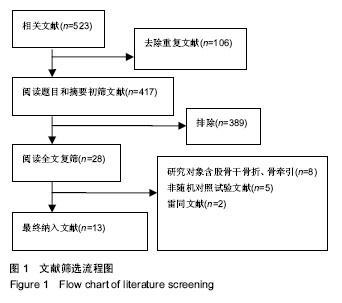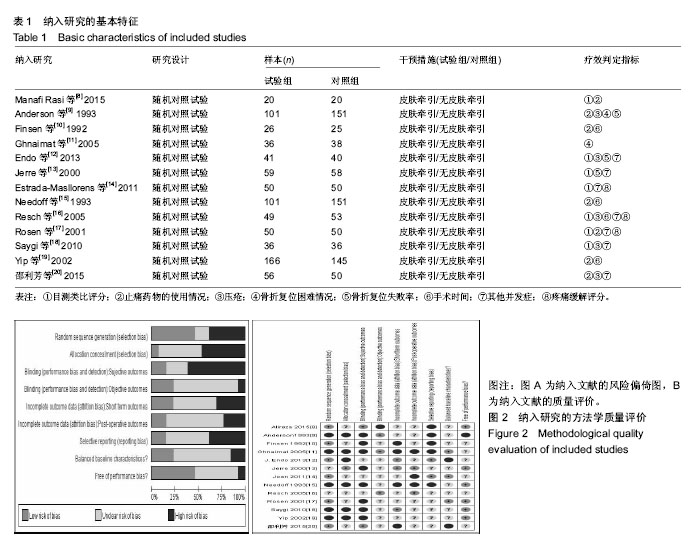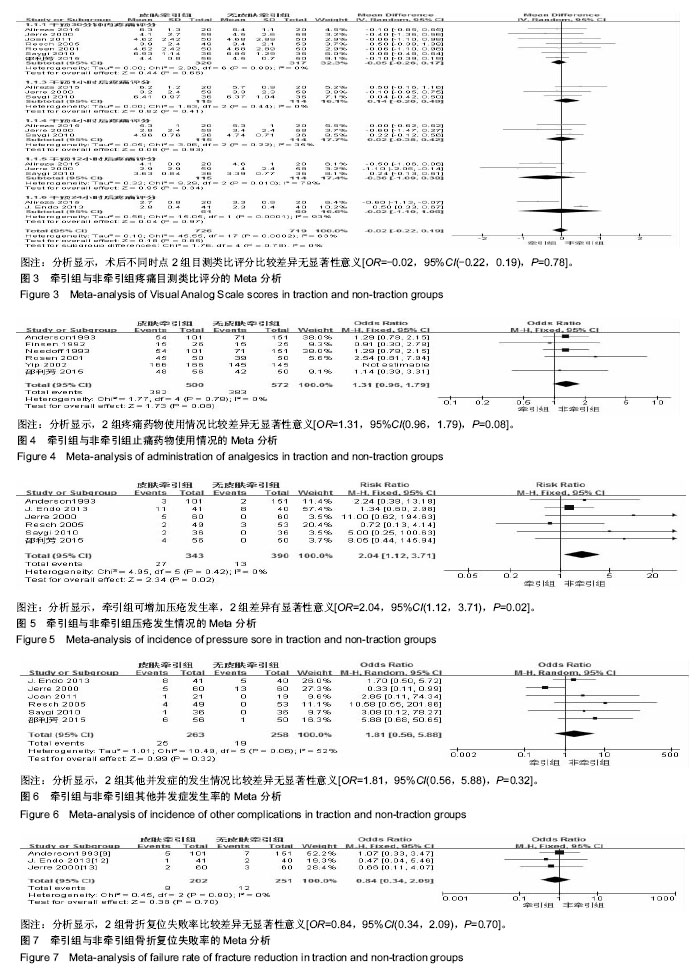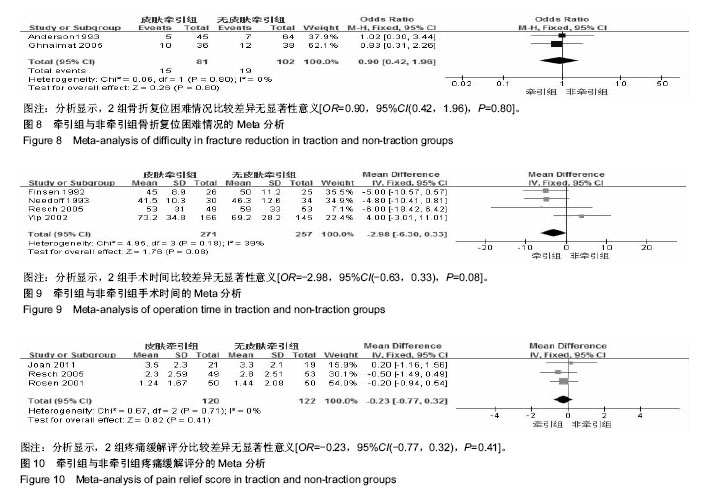| [1] 张英泽.临床创伤骨科流行病学[M].北京:人民卫生出版社, 2009: 150-170.[2] Koh LK, Saw SM, Lee JJ, et al. Hip fracture incidence rates in Singapore 1991-1998. Osteoporos Int. 2001;12(4):311-318.[3] Bjorgul K, Reikeras O. Incidence of hip fracture in southeastern Norway: a study of 1730 cervical and trochanteric fractures. Inte Orthop. 2007;31(5):665-669. [4] 邱贵兴,裴福兴,胡侦明,等.中国骨质疏松性骨折诊疗指南(骨质疏松性骨折诊断及治疗原则)[J].中华骨与关节外科杂志, 2015, 8(5):371-374.[5] Hoenig H, Rubenstein LV, Sloane R, et al. What is the role of timing in the surgical and rehabilitative care of community-dwelling older persons with acute hip fracture? Arch Intern Med.1997;157:485-486.[6] Resch S, Thorngren KG. Preoperative traction for hip fracture: A randomized comparison between skin and skeletal traction in 78 patients. Acta Orthop Scand. 1998;69:277-279. [7] Anders RL, Ornellas EM. Acute management of patients with hip fracture. A research literature review. Orthop Nurs.1997;16(2): 31-46. [8] Manafi Rasi A, Amoozadeh F, Khani S, et al. The effect of skin traction on preoperative pain and need for analgesics in patients with intertrochanteric fractures: a randomized clinical trial. Arch Trauma Res. 2015;4(2): e12039.[9] Anderson GH, Harper WM, Connolly CD, et al. Preoperative skin traction for fractures of the proximal femur. A randomised prospective trial. J Bone Joint Surg Br. 1993;75(5):794-796.[10] Finsen V, Børset M, Buvik GE, et al. Preoperative traction in patients with hip fractures. Injury. 1992;23(4):242.[11] Ghnaimat M, Aldweri M, Hijazi A, et al. Preoperative skin traction for fractures of the proximal femur. J Bahr Med Soc. 2005;17(4):240-242.[12] Endo J, Yamaguchi S, Saito M, et al. Efficacy of preoperative skin traction for hip fractures: a single-institution prospective randomized controlled trial of skin traction versus no traction. J Orthop Sci. 2013;18(2): 250-255.[13] Jerre R, Doshe A, Karlsson J. Preoperative treatment in patients with hip fractures is not useful. Clin Orthop Relat Res. 2000;(378):169-173.[14] Estrada-Masllorens JM, Cabrera-Jaime S. Randomised clinical trial on pain control in intertrochanteric fractures of the femur with and without skin traction. Enferm Clin.2011;21(5): 264-270.[15] Needoff M, Radford P, Langstaff R. Preoperative traction for hip fractures in the elderly: a clinical trial. Injury. 1993;24(5): 317-318.[16] Resch S, Bjärnetoft B, Thorngren KG. Preoperative skin traction or pillow nursing in hip fractures: a prospective, randomized study in 123 patients. Disability & Rehabilitation. 2005;27(18-19):1191-1195.[17] Rosen J, Chen FR, Koval K. Efficacy of preoperative skin traction in hip fracture patients: a prospective, randomized study. J Orthop Trauma.2001;15(2):81-85.[18] Saygi B, Ozkan K, Eceviz E, et al. Skin traction and placebo effect in the preoperative pain control of patients with collum and intertrochanteric femur fractures. Bull NYU Hosp Jt Dis. 2010;68(1):15-17.[19] Yip D, Chan C, Chiu PK, et al. Why are we still using pre- operative skin traction for hip fractures? Int Orthop. 2002; 26(6):361-364.[20] 邵利芳,夏晓斌,鲍荣华. 术前皮牵引对髋部骨折疼痛改善及复位的影响[J].上海交通大学学报(医学版),2015,35(6):851-854.[21] Billsten M, Besjakov J, Hyddmark U, et al. Enquiry in Sweden on the use of traction preoperatively in patients with hip fracture and a radiological study on the effect of the traction on ten displaced cervical hip fractures. Acta Orthopaedica Scandinavica.1996;270:35.[22] Brink AC, Boonstra O, van Der Wal BCH, et al. Is preoperative traction for proximal femoral fractures bene?cial to the patient or a comfort to the doctor? Eur J Trauma. 2005;31(1):39-43.[23] Lindholm C, Sterner E, Romanelli M, et al. Hip fracture and pressure ulcers -the Pan-European Pressure Ulcer Study- intrinsic and extrinsic risk factors. Int Wound J.2008;5(2):312-328. [24] Ooi LH, Wong TH, Toh CL, et al. Hip fractures in nonagenarians-a study on operative and non-operative management. Injury. 2005;36(1): 142-147.[25] Loo WL, Loh SY, Lee HC. Is there a signi?cant difference in surgery and outcomes between unipolar and bipolar hip hemiarthroplasty? A retrospective study of a single institution in Singapore. Malays Orthop J. 2011;5(1):3-7.[26] Micic ID, Mitkovic MB, Park IH, et al. Treatment of subtrochanteric femoral fractures using selfdynamisable internal fixator. Clin Orthop Surg. 2010;2:227-231. [27] Donegan DJ, Gay AN, Baldwin K, et al. Use of medical comorbidities to predict complications after hip fracture surgery in the elderly. J Bone Joint Surg Am. 2010;92: 807-813.[28] Gregory JJ, Kostakopoulou K, Cool WP, et al. One-year outcome for elderly patients with displaced intracapsular fractures of the femoral neck managed non-operatively. Injury. 2010; 41(12):1273-1276.[29] Parker MJ, Handoll HHG. Pre-operative traction for fractures of the proximal femur in adults. Cochrane Database Syst Rev. 2006;(3):CD000168. [30] Strömqvist B, Nilsson LT, Egund N, et al. Intracapsular pressures in undisplaced fractures of the femoral neck. J Bone Joint Surg Br.1988;70:192-194.[31] Queally JM, Parker MJ. Pre-operative traction for hip fractures in adults. Cochrane Database Syst Rev. 2011;7(12): CD000168.[32] Even JL, Richards JE, Crosby CG, et al. Preoperative skeletal versus cutaneous traction for femoral shaft fractures treated within 24 hours. J Orthop Trauma. 2012;26(10):e177-182.[33] 刘雪梅.老年人股骨颈骨折皮牵引术的护理[J]. 医学理论与实践,2011,24(20): 2494-2495.[34] 刘秀莹,刘秀荣,张秀英,等.神经科病房消灭褥疮的几点体会[J].中华护理杂志,1996,31(3):180-181.[35] Peirce SM, Skalak TC, Rodeheaver GT. Ischemia-reperfusion injury in chronic pressure ulcer formation: a skin model in the rat. Wound Repair Regen. 2000;8(1):68-76.[36] 徐云侠,胡守紫,钟政荣,等. 压迫时间与压疮发生关系的实验研究[J]. 蚌埠医学院学报,2015,40(7):854-856.[37] 张水兰,时红梅.压疮的护理进展[J].实用护理杂志,2002,18(11): 60-61. |
.jpg)




.jpg)